
New roof exhaust unit TP series in CC
Fandis has developed a new energy-saving roof ventilation solution, expanding the range of plastic towers with 24 and 48V DC powered models. Visit the dedicated section for more information
The filter fans are a practical solution to promote the disposal of the hot air generated by the components inside an electrical panel.
The filters with fan channel the cooler, filtered external air inside the electrical panel removing any dirt, dust and particles that could damage the components of the electrical panel. The filter fans also expel the hot air through ventilation grids or roof exhaust units.
Roof exhaust units are used in electrical panels located in confined spaces and provide direct heat extraction through the upper area of the electrical panel. These units can be coupled to a filter to obtain natural or forced convection air cooling (fan version only).
The airflow generated by the filter fans and roof exhaust units make it possible to maintain a more even temperature inside the electrical panel, protecting the electronic components from overheating.
Electromagnetic compatibility (EMC) refers to the property of an electrical device to function properly in a given environment with electromagnetic interference, without adversely affecting it.
As this is an important quality prerogative, designers must take the protection requirements into account already at the equipment drawing-board stage to guarantee the stability and long life of the various electrical components.
The EMC shielding of an enclosure reduces noise emission and protects internal components from external sources of interference. Fandis EMC filters and filter fans are designed to restore the protective effect of the enclosure despite the openings made for housing them.
More and more often, the causes of malfunction or failure of electrical and electronic equipment in control panels and on-board machines are to be attributed to problems of overheating. The temperature and humidity conditions inside the panel affect the service life of the components. Normally the recommended average working temperature in the cabinet is 35°C, while the relative humidity (RH) should not exceed 60%. Fandis offers a wide range of solutions for the effective disposal of heat generated by electrical components, for controlling the level of humidity inside the electrical panel , for cooling by air conditioning and, more in general, for ventilation.
Ventilation grids with filter allow the air to pass through and the heat to be removed naturally. This solution can be used to dissipate low power levels in dusty environments.
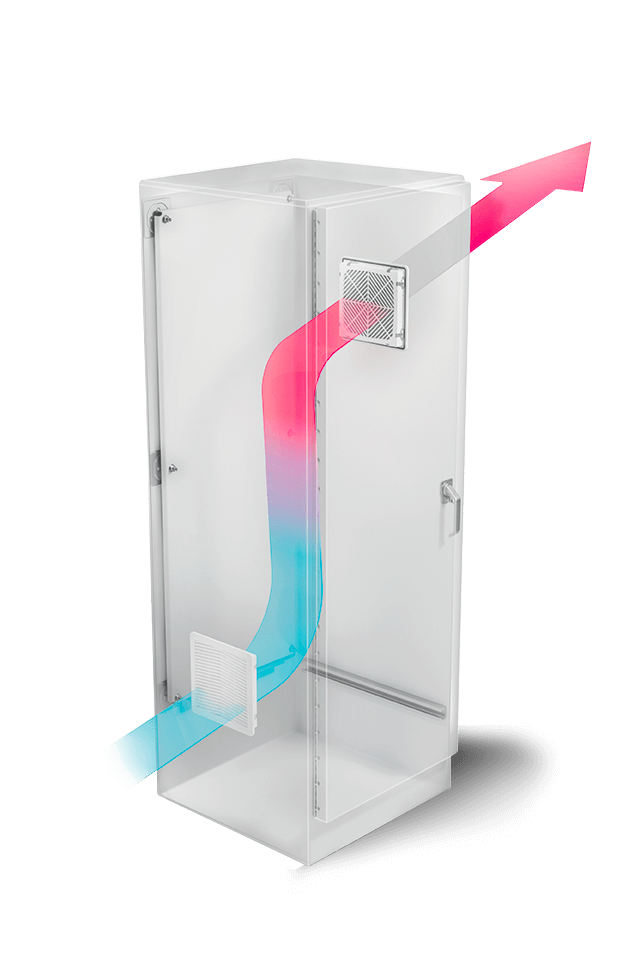
Forced ventilation is an efficient, cost-effective solution to prevent the formation of hot air pockets inside the electrical panel.
The optimal configuration consists of a fan with filter combined with a filtering ventilation grid. The fan with filter (filter fan), installed in the lower part of the panel, injects and filters air from the room (standard airflow), while the hot air is expelled through the grid with filter positioned in the upper part. In this manner, the pressure generated by the ventilation prevents unfiltered air from seeping in through holes or cracks.
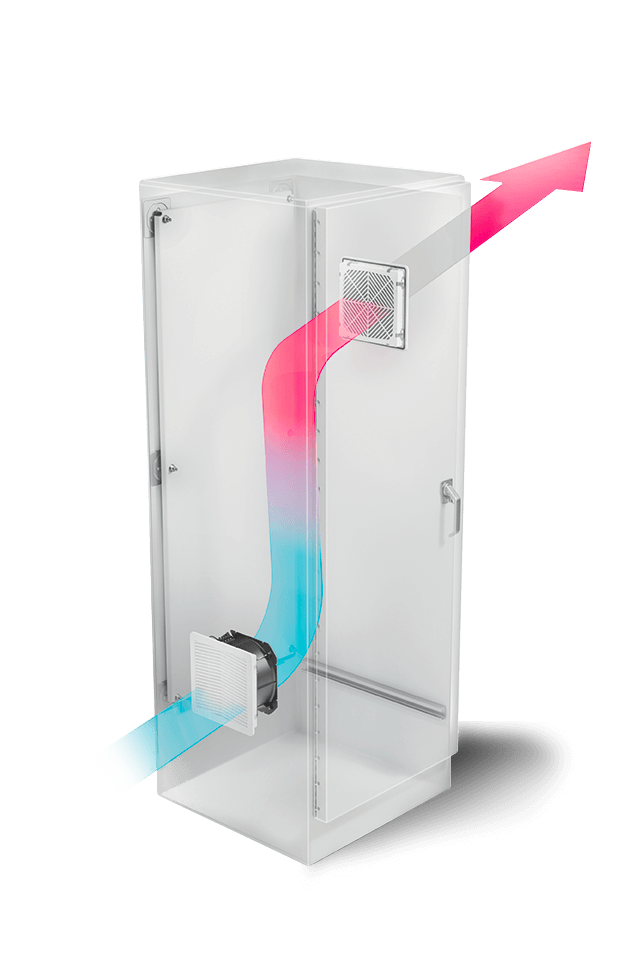
A reverse airflow configuration is also possible, with the filter fan installed in the upper part and ventilation grid with filter positioned in the lower part of the panel. The ventilation system can be controlled by a thermostat when high temperatures are reached.
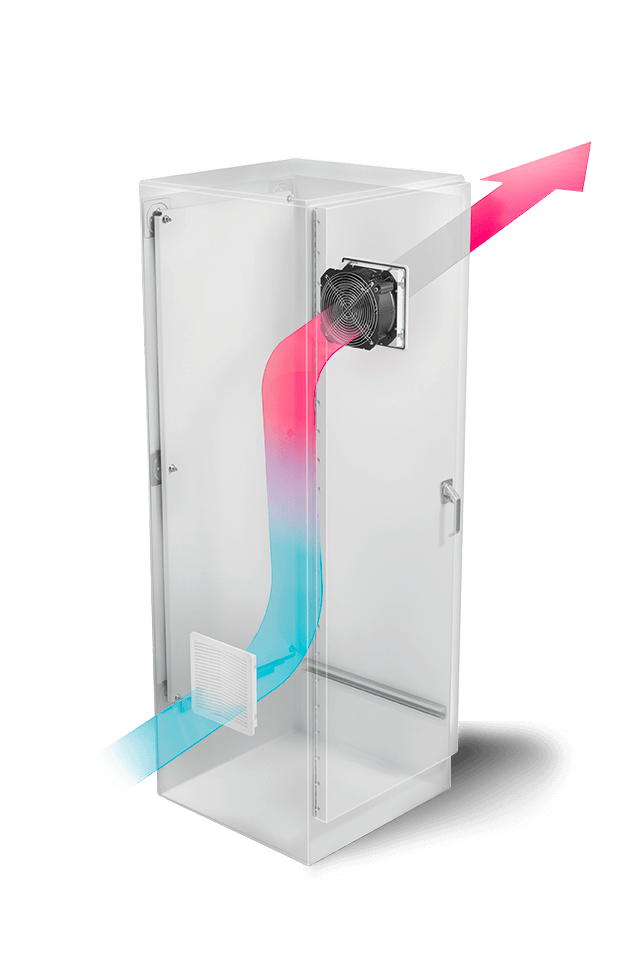
Ventilation with roof extraction can be used when, for instance, some side walls of the electrical panel are covered by obstacles, walls or walls of other panels. In the ideal configuration, the roof exhaust unit, installed on the top of the panel, is paired with a ventilation grid with filter located at the bottom. The vacuum generated by the exhaust unit draws air from outside through the ventilation grid, allowing internal air exchange and heat disposal.
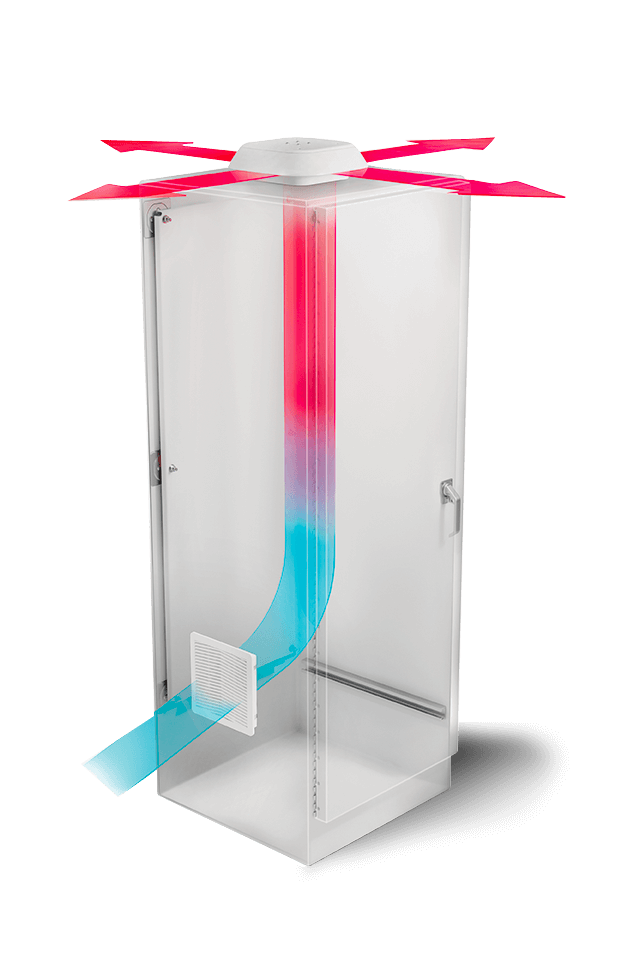
The use of a directional fan is an alternative solution to achieve good air circulation inside the electrical panel. The fan distributes the hot air to lower the temperature, cooling localised hot spots and diffusing cool air, possibly from a cooling unit.
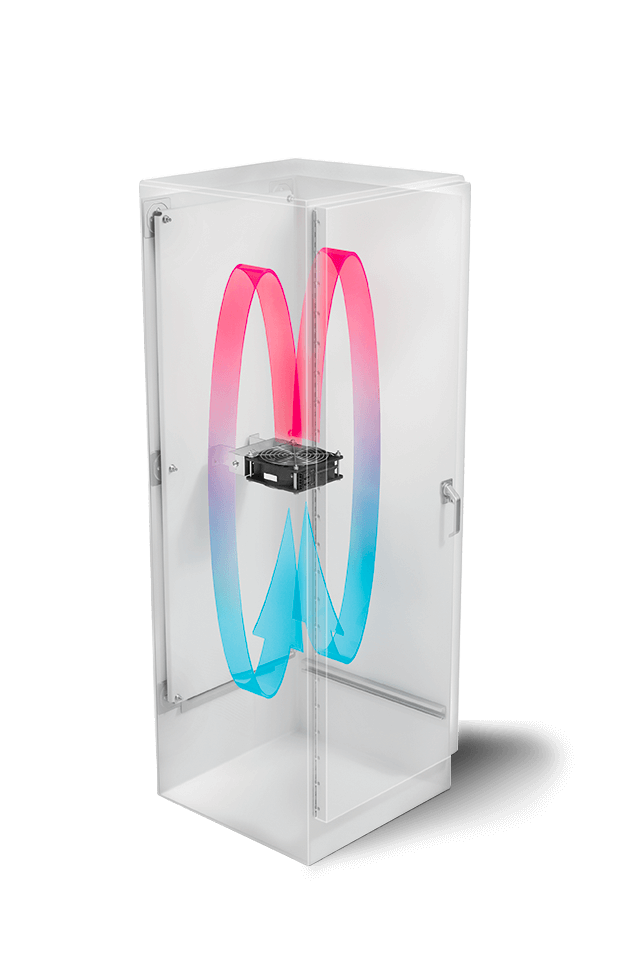
Here you can find updates and news regarding events, trade shows, webinars and all the appointments we will attend. In addition, we will announce the launch of new products and provide exclusive news for community members